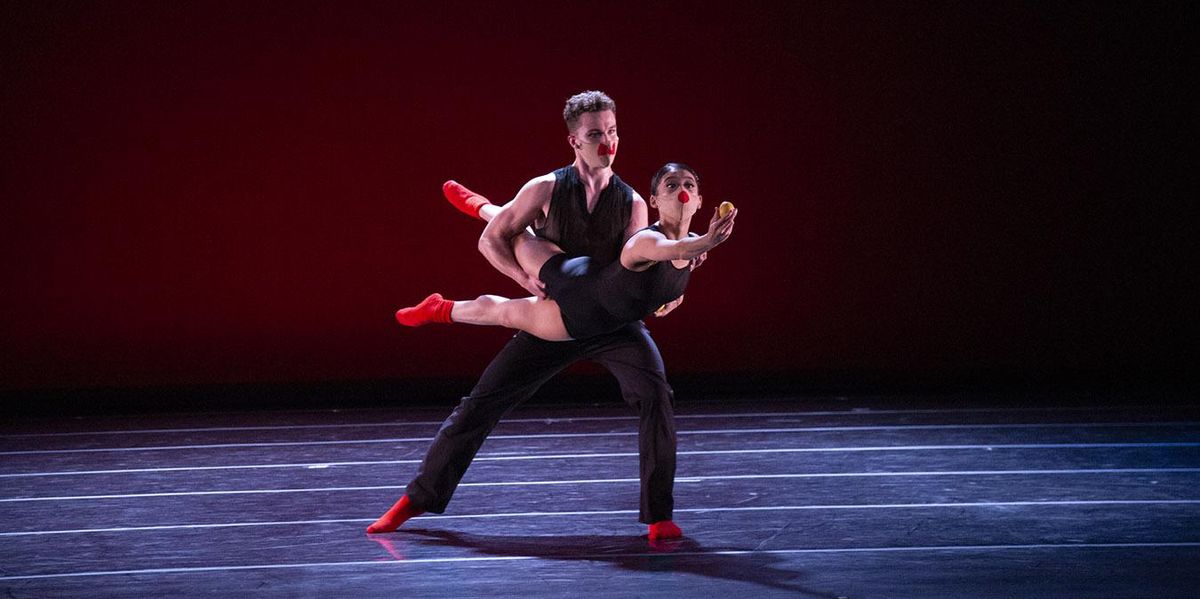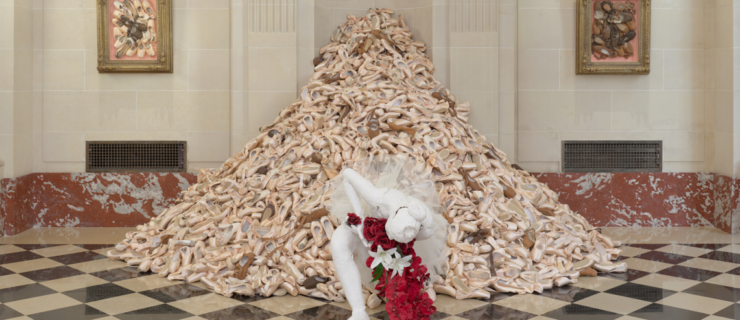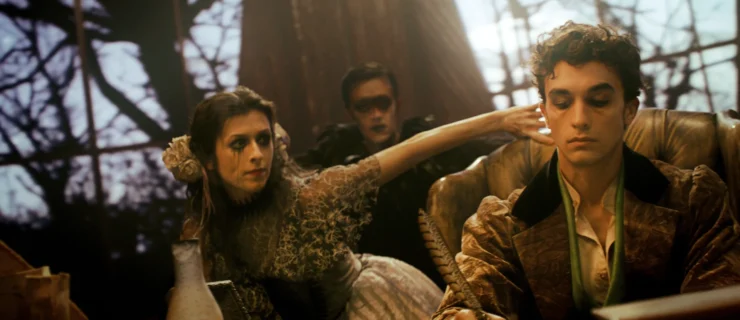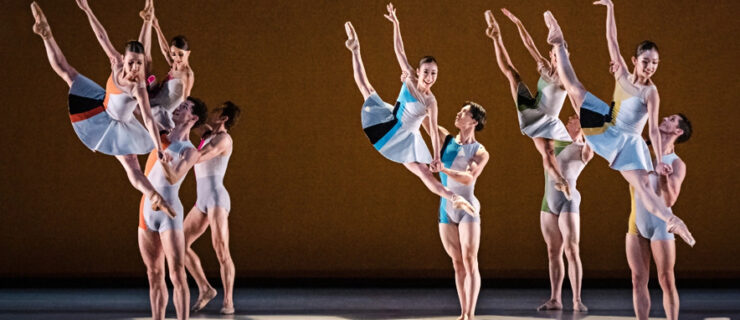An Infectious-Disease Physician on What Vaccines Mean for Ballet
As the coronavirus pandemic grinds into its second year, the toll on ballet companies—and dancers—has been steep. How long before dancers can rehearse and perform as they once did?
Like most things, the return to normal for ballet seems to hinge on vaccinations. Just over 22 percent of people in the U.S. are now vaccinated, a way from the estimated 70 to 85 percent experts believe can bring back something similar to pre-pandemic life.
But what would it mean for 100 percent of a ballet company to be vaccinated? Tulsa Ballet artistic director Marcello Angelini is about to find out—and hopes it brings the return of big ballets on the big stage.
“I don’t think companies like ours can survive doing work for eight dancers in masks,” Angelini says. “If we want to work, dance, and be in front of an audience consistently and with the large works that pay the bills, immunization is the only road that leads there.”
While Oklahoma began offering vaccines to anyone who wants them on March 29, all of the dancers in Tulsa Ballet and Tulsa Ballet II have already had at least their first shot. The dancers were eligible early as teachers or substitute teachers in Tulsa Ballet’s school. Angelini expects to be able to have the entire company working in one studio by the end of April—when every dancer is two weeks out from their second dose.
Angelini has worked with AGMA’s Wendy LaManque and board-certified infectious-disease physician Dr. Lauren Brett Jaggers throughout the pandemic to devise safety plans, such as pods, temperature checks, masks, cleaning protocols and an air-filtration system. Tulsa Ballet says it hopes to phase out masks once all dancers have been fully vaccinated for two weeks.
Angelini expects that next season will look a lot like pre-pandemic times. He anticipates he’ll be able to fill the theater at 50 percent capacity and offer an additional performance of each program in order to accommodate more people. He even plans a premiere of a new Nutcracker with the orchestra, and costumes for the children that include masks, as they will likely be unvaccinated.

Tulsa ballet’s Regina Montgomery, Giulia Neri and Maine Kawashima rehearsing Annabelle Lopez Ochoa’s Limoncello
Bethany Kirby, Courtesy Tulsa Ballet
Although there can be no definitive answer as to how things will progress, Angelini’s plan aligns with what should be possible when an entire company is vaccinated, according to Jaggers. To help get Tulsa Ballet to 100 percent participation, she was on hand to answer any questions the dancers had.
What will happen in companies where dancers don’t want the vaccine? LaManque says that many performers are eager to have it so they can get back to work, but there might be some who have religious objections, medical conditions or other reasons not to get it. For companies that are signatories of AGMA, it is not solely up to those individual companies on how to handle situations involving dancers who choose not to receive a vaccine. “Because vaccination policies are a mandatory subject of bargaining,” says LaManque, “companies must bargain with AGMA over their proposed vaccine accommodation policy.”
Pointe
caught up with Jaggers to learn what dancers should know about the vaccine.
Why is it important for dancers to get the COVID-19 vaccine?
We all have to do our part to reach herd immunity, and that takes every member of our greater communities at large taking the vaccine. On the whole, dancers are young and healthy, and yes, the risk of complications of COVID to them are less than other populations. However, it is certainly not zero percent. In fact, my home state of Colorado recently released hospital data, and 17 percent of hospitalized patients with COVID are aged 20 to 39. That is almost 1 in 5. “Less at risk” does not mean “no risk.” I have seen many people under the age of 40 die this year. And many more who have been debilitated for months on end with what we are starting to refer to as “COVID long-haulers.”

Courtesy Jaggers
A significant part of the patronage of many ballet companies are those over the age of 60 and, therefore, at highest risk of death and complications if infected with COVID. Though a dancer may not get ill from COVID, if they are carrying the virus and expose their patrons to the illness, it is a losing situation for all involved. In addition, the dancers work side by side with choreographers, ballet mistresses, company directors, costume departments and the like, most of whom are older and, therefore, at risk for complications from COVID as well. The more people that are vaccinated, the less likely it is anyone becomes ill.

Tulsa Ballet II dancer Natali That in rehearsal for Joshua L. Peugh’s The Lost Nutcracker
Bethany Kirby, Courtesy Tulsa Ballet
Once back in the studio, what safety protocols should dancers take if they are/are not yet vaccinated? Is it safe for groups of dancers that are fully vaccinated to rehearse together without masks?
Every company is unique, and protocols must be tailored to each company, but, generally, if the entire company is not vaccinated, then it’s likely that keeping masks on and other safety measures that have been in place need to stay in place.
With regard to Tulsa Ballet, we have taken the approach that if everyone is vaccinated, it will be safe to not wear masks, as it is a smaller company. But every company is different. And every state and city seem to have their own specific mask mandates (or lack thereof). The CDC has said that small groups can gather together if fully vaccinated. At Tulsa Ballet, the dancers had been living in their own essential bubbles since all of this began. They were not spending time with other family members, traveling or eating out. We had to have “buy in” from all the dancers from the beginning. This is one strong consideration I had when we discussed making the transition from pods, to vaccinations, to being able to dance without masks. But again, the company knows that my recommendations can change based on emerging data or state/local laws.
Now, as Tulsa Ballet reaches the point of two weeks after full vaccination with the Moderna vaccine, I feel they are able to rehearse without masks. If they had had the Johnson & Johnson vaccine, my opinion may not be the same, given it is less effective against mild disease cases. The CDC has reported that the J&J/Janssen vaccine had high efficacy at preventing hospitalization and death in people who did get sick. [Editor’s note: There is currently a pause in administering the Johnson & Johnson vaccine.] In addition, the CDC says that fully vaccinated persons do not need to quarantine after exposure to a case. (However, any infected individual can spread the disease to non-vaccinated people.) This is another fact we emphasize to the dancers as an encouraging reason to get vaccinated, so one positive case in the company will not completely shut everything down for 7 to 10 days of quarantine. One thing I have continuously said to the company, and Marcello, is that we learn more every day and recommendations will continue to change.
When dancers came to you with their hesitation to receive the vaccine, how did you allay their concerns?
This one was tougher as there is so much misinformation which is easily accessible. I think an important first step is to acknowledge their fears and concerns. We are all living through a scary time. Then I asked them to form specific questions or concerns they wanted me to address. Sometimes they didn’t even know what they were worried about. Sometimes they had very specific questions which were easily refutable with scientific data. Some people have already made up their mind, and no matter what you share with them, they will never change their minds.
Vaccination is how companies will survive going forward, so the more coordinated and consistent the messaging that comes from public health advisors, as well as the ballet community at large, the sooner we will have curtains rising again.




